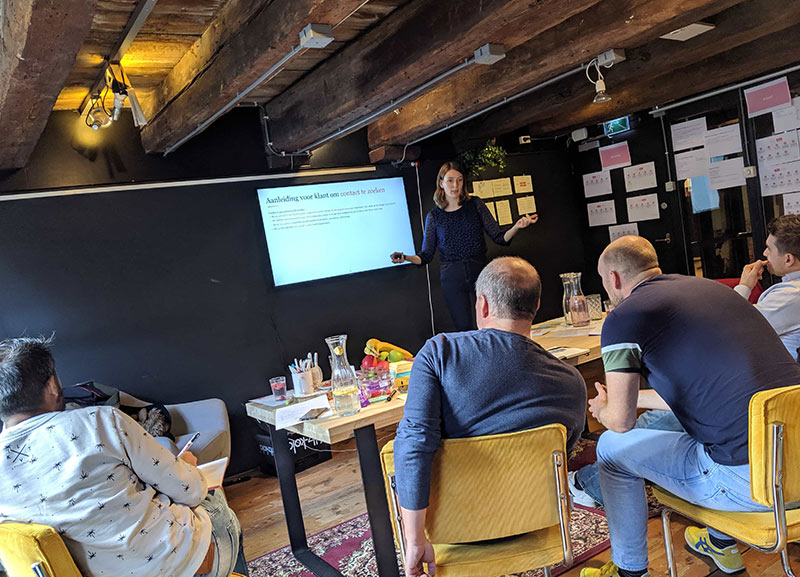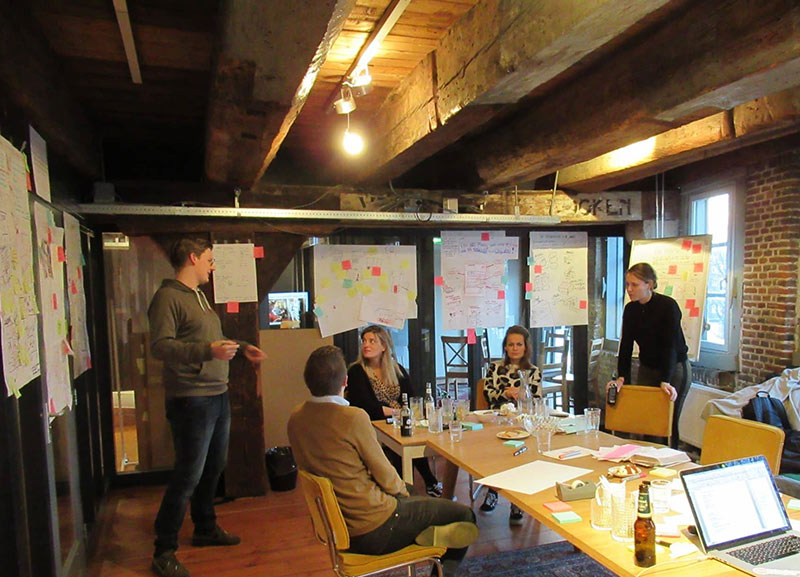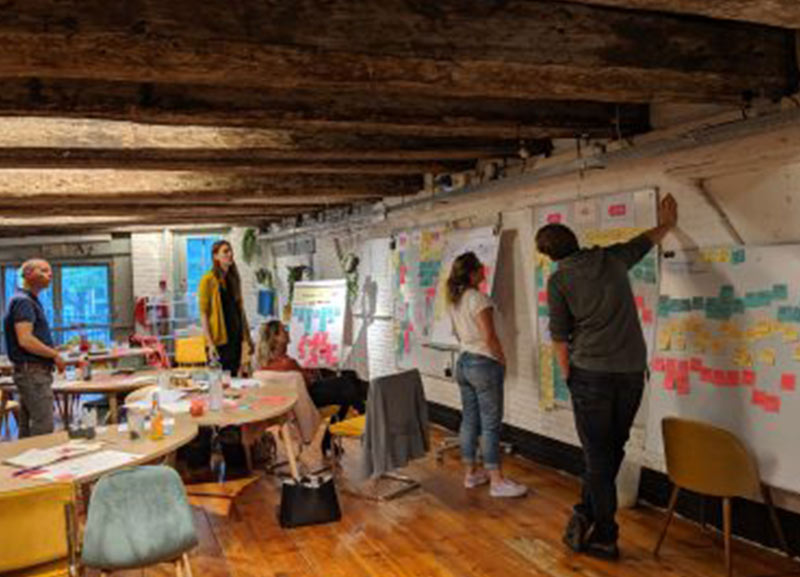In this guest blog, our Behavioural Design Academy alumnus Ron Ghijssen, founder of ANDC Design shares a fascinating and very well executed intervention strategy he worked on in the Dutch City of Amersfoort. The target of the intervention was to get people to start separating their organic waste. The case demonstrates of the power of behavioural design thinking combined with creativity for designing sustainable behavioural change.
The Human Insight
The research phase (i.a. questioning a group of citizens of Amersfoort) led to several exciting insights which formed the base for the campaign strategy. The core of this strategy contained two central elements:
- Emphasize separating organic waste is normal; it’s a common thing
- Facilitate citizens in separating organic waste
With this strategy as an essential guideline, we focused a bit more on insights from the research phase. It triggered us that the majority of citizens consider separating waste as an annoying task because it implies effort (this applies not only to people in Amersfoort, former research shows that this applies to the majority of people in the Netherlands).
And you know what? People are right. It’s so much easier to throw the organic waste in the ‘normal’ household trash can. For separating organic waste the right and efficient way, you need a small organic waste bin that you can place on the kitchen countertop (which people often regard as a stand in the way). People who are motivated to separate organic waste have this kind of bin. But the majority isn’t motivated enough to buy such a bin and place it consequently on their kitchen countertop. So despite the good intentions people have (which they overall really have), these elements form significant barriers to separate organic waste for most people.
Do you also want to learn how to apply behavioural science in practice?
We have created a brochure that explains all the ins and outs of the Fundamentals Course. From the program to the former participants. From the investment to the people behind the Academy: it's all in there.
The solution: Reframe the Organic Waste Bin
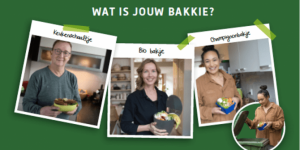
So we realized that asking ‘Do you have a little bin?’ wasn’t the right question. The right question was: ‘What’s your little bin?’ (in Dutch: ‘Wat is jouw bakkie?’)
Behavioural Design In Action
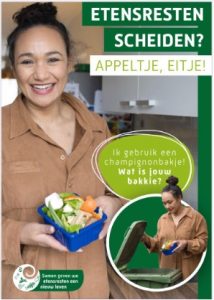
Another great advantage of this message is that people are being facilitated by this question instead of investing in tangible physical goods. After all, there was no budget to give all citizens their little bin. But why should you, when everyone has more than enough by themselves? So there was no needless time and money wasted (sorry) for getting everyone a particular organic waste bin.
Finally, the question also contains the desired social norm we wanted the campaign to express: everyone has a little bin, what’s yours?
Campaign Execution
Furthermore, we designed and developed several interventions to stimulate the desired behaviour to reach the target group. We created visuals for an Amersfoort wide (poster) campaign. We asked citizens of Amersfoort to be our ‘models’ because we wanted the question (What’s your little bin?) the target group to ask the question themselves.
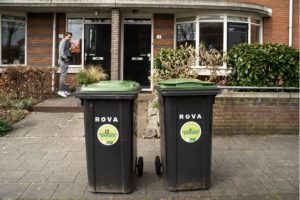
Again, the stickers carry out the social norm when visible on the sidewalks and serve as prompts or reminders for the desired behaviour.
The campaign launched in May 2021, and the city council will monitor the results through an annual analysis of the share of organic waste in residual household waste. One of the most critical desired outcomes is a significant decrease of the organic part in household waste. We hope that our combination of behavioural design and creativity will contribute to this vital goal.
I hope the case of Amersfoort showed you how using insights from solid research, selecting the correct behavioural design principles and techniques ánd adding some creativity can lead to a positive, appealing and hopefully effective campaign.
Ron Ghijssen is a SUE Behavioural Design Academy alumnus. He is the founder of creative agency ANDC.
Cover visual by: Joshua Hoehne on Unsplash.
How do you do. Our name is SUE.
Do you want to learn more?
Suppose you want to learn more about how influence works. In that case, you might want to consider joining our Behavioural Design Academy, our officially accredited educational institution that already trained 2500+ people from 45+ countries in applied Behavioural Design. Or book an in-company training or one-day workshop for your team. In our top-notch training, we teach the Behavioural Design Method© and the Influence Framework©. Two powerful tools to make behavioural change happen in practice.
You can also hire SUE to help you to bring an innovative perspective on your product, service, policy or marketing. In a Behavioural Design Sprint, we help you shape choice and desired behaviours using a mix of behavioural psychology and creativity.
You can download the Behavioural Design Fundamentals Course brochure, contact us here or subscribe to our Behavioural Design Digest. This is our weekly newsletter in which we deconstruct how influence works in work, life and society.
Or maybe, you’re just curious about SUE | Behavioural Design. Here’s where you can read our backstory.
